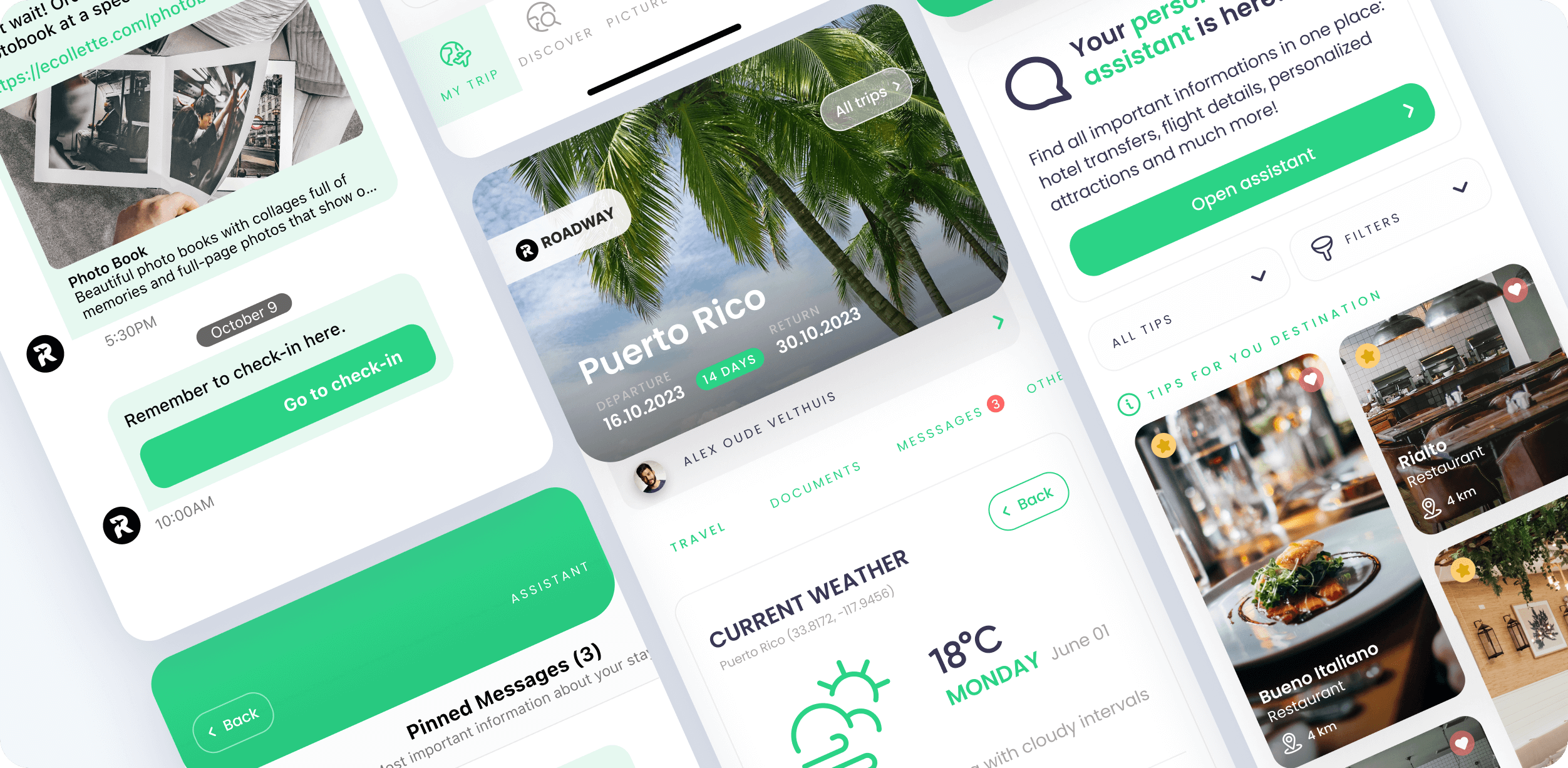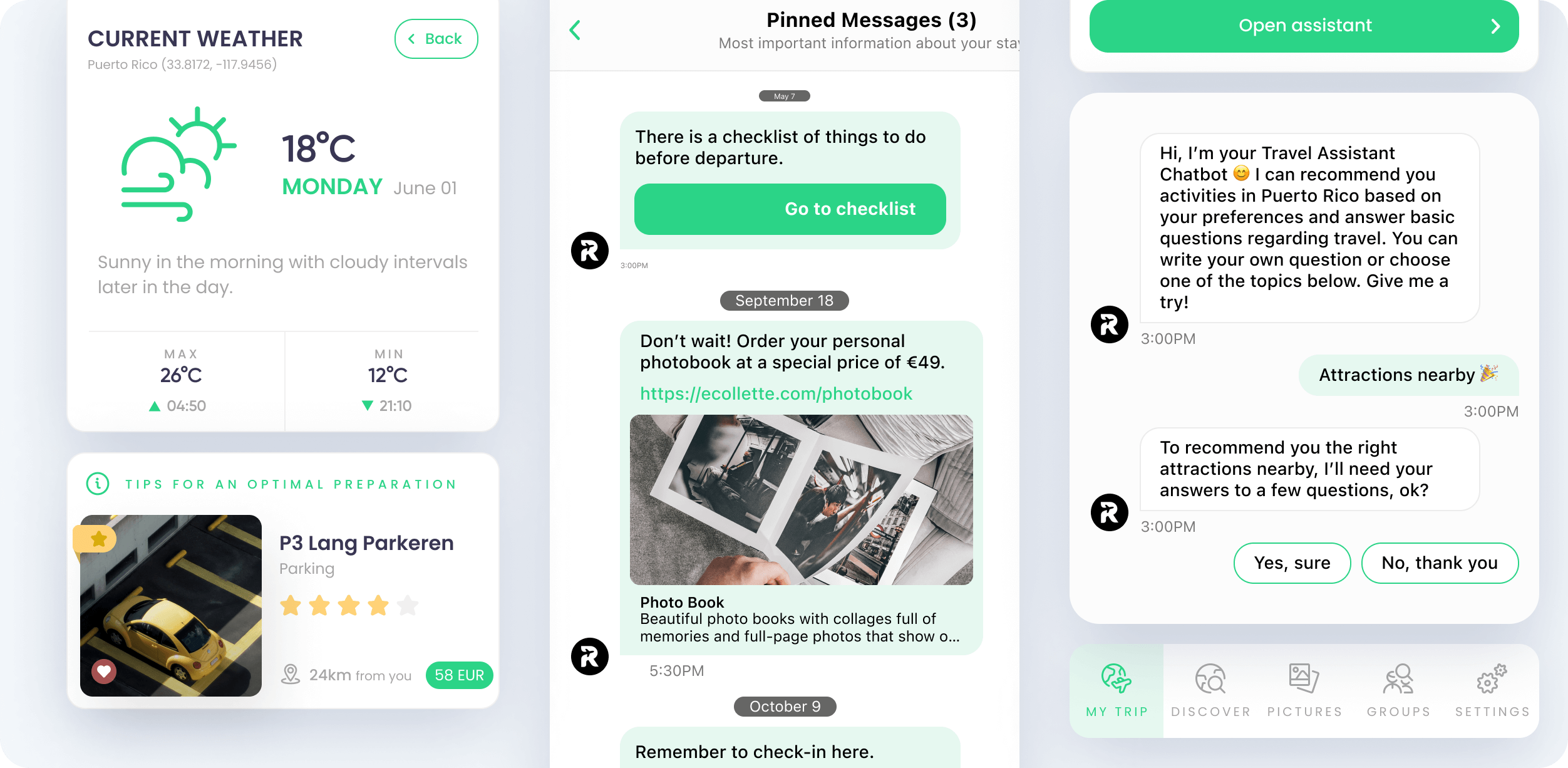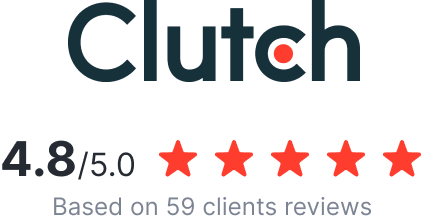
Travelia improved time-to-market and saw user adoption go up by 31,6% after a switch to React Native
Travelia saw stagnated growth due to issues with scaling two native mobile apps. The company wanted to release faster, decrease maintenance costs, and improve UX in one fell swoop.
About Travelia
Founded in 2016, Travelia offers a SaaS-based white-label mobile application for travel agencies and tour operators.
The app allows businesses to offer their clients features such as access to a booking system and flights, car rental information, document storage, a photo journal, leisure activity tips, and even a personal AI assistant.
Travelia wants to provide personalized and contextualized assistance for every traveler, helping make their stay fun and safe.
Country
The Netherlands
Industry
Travel
Timeline
4.2021 – 2.2022
Founded in 2016, Travelia offers a SaaS-based white-label mobile application for travel agencies and tour operators.
The app allows businesses to offer their clients features such as access to a booking system and flights, car rental information, document storage, a photo journal, leisure activity tips, and even a personal AI assistant.
Travelia wants to provide personalized and contextualized assistance for every traveler, helping make their stay fun and safe.
The challenge
Do you feel your startup’s growth is at a standstill and that it is technology that is bringing it down?
Startups often struggle with choosing between native mobile technologies and cross-platform frameworks such as React Native. The former may offer superior performance in some cases, especially for very complex apps, but it may come at a cost.
Travelia first developed its product as two separate native mobile apps – for Android and iOS.
But as the product continued to grow, the client experienced issues:
- Lack of consistency – each feature had to be developed twice, making it increasingly difficult to maintain uniformity between two separate codebases.
- UX headaches – the lack of consistency in the code led to each app behaving slightly differently, which affected UX.
- Technical debt – resolving these differences took time, which could have been used for code maintenance.
- Maintenance costs – lack of time elevates maintenance issues over time as they accumulate.
- Slow time-to-market – all of these problems led to slow release cycles, further complicated by the need to simultaneously push upgrades and fixes to 40+ of business clients. Travelia’s deployment pipeline needed to be streamlined and simplified.
Travelia had a lot of new feature ideas, but they felt like they were hitting a wall in terms of scalability and efficiency.
The Software House has previously provided DevOps support and implemented security improvements for Travelia’s AWS-based architecture. They decided to trust us again.
Partnership goal To rewrite Travelia’s mobile applications so that the software supports the company’s present and future business ambitions
Before
Travelia had to increasingly worry about the technical cost every time they made new improvements to the native apps.
After
A switch to React Native resolved scalability issues. Travelia can grow without constraints, release faster, and offer consistent UX.

The Software House's Agile team led the entire project for Travelia
We worked on
Team formation
The Software House fielded a fully autonomous team on short notice. The team included an experienced React Native lead developer.
The initial team consisted of a designer, three React Native developers, a QA engineer, and a project manager.
“Their role in the project turned out to be critical.
We had a clear definition of done, which improved our communication tremendously. Having defined a clear path, we had some fun working together, and I think that kept us motivated.
They’re actively trying to make everything work better. The designer and QA inspired us to consider many changes to the product’s UX/UI that could improve the user journey down the road.”
Our partnership
In 10 months of development, Travelia resolved all its scalability, deployment, and UX issues. What’s more, the new React Native app quickly outperformed the legacy apps in terms of user adoption.
Let’s break down the development into the application and the deployment pipeline, both of which received a complete overhaul.
Maintenance costs down by 40%, user adoption up by 31,6%
The development of the new application resolved all of the consistency, maintenance, and legacy debt issues that troubled the two native apps. Overall, the maintenance costs dropped by 40% for the mobile app and by 25% for the production environment.
But that was to be expected. The true standout was the look and feel of the brand-new React Native app.
The Android and iOS apps included a progressive web app loaded within them. It required the user to log in again and use web screens that didn’t offer the best UX on mobile devices. The new React Native app eliminated the PWA and introduced a single sign-on.
These changes significantly improved UX, which showed in increased app usage. Pre-COVID, 60% of users logged in to book in the apps. Post-development, it rose to 79% – a 31.6% increase.
The deployment is streamlined and largely automated
The previous deployment scheme struggled with maintaining consistency between the two apps and limited task automation.
The pipeline remains quite complex, but the automation powered by the fastlane platform minimizes manual tasks.
In addition, test procedures that ensure no faulty deployments are implemented. They allow for frequent updates without disrupting work, improving time-to-market. All deployments now need approval. Users can also request app builds on demand.
Technologies
React Native, fastlane (development and release automation), Figma (design)
The future
A bright future ahead – no more wall!
The React Native app is up and running, but our work with Travelia continues.
The Software House is in charge of maintaining the Node.js-based backend, which has been completely developed using serverless technology to provide unlimited scalability.
We’re also working on an AI-based assistant for the Travelia app. It answers user queries in context. For example, the user can ask the assistant if their hotel gives access to a specific service.
The tool uses a combination of open-source and commercial generative AI models.

Deliver the project with a product team recommended by 98% of CTOs
On average, tech leaders from 10+ industries rate us ★5 for quality and speed. Build you product with confidence by using our 9 years of experience in software development.
Work only with scalable technologies
Expect a software solution designed for stability, usability, and scalability thanks to next-gen technologies used at The Software House: microservices, serverless, and cloud computing
240+ professionals available
People with the skill set your project needs are within reach – developers, cloud engineers, DevOps, architects, and product designers
Rated 4.8/5 on Clutch.co
We follow a simple mantra that worked for +160 software projects we delivered with success — everything we build must be of great value to you and your clients

“They’re actively trying to make everything work better.”
We believe that React Native can be more than just a saving measure. With the right approach to development, you can get a scalable, high-performing, and beautiful cross-platform experience.
Do you believe it, too?
Headquarters
ul. Twarda 18
Warszawa, 00-105
Poland
ul. Dolnych Wałów 8
Gliwice, 44-100
Poland
The Software House
2025 The Software House | All rights reserved
2025 The Software House | All rights reserved
